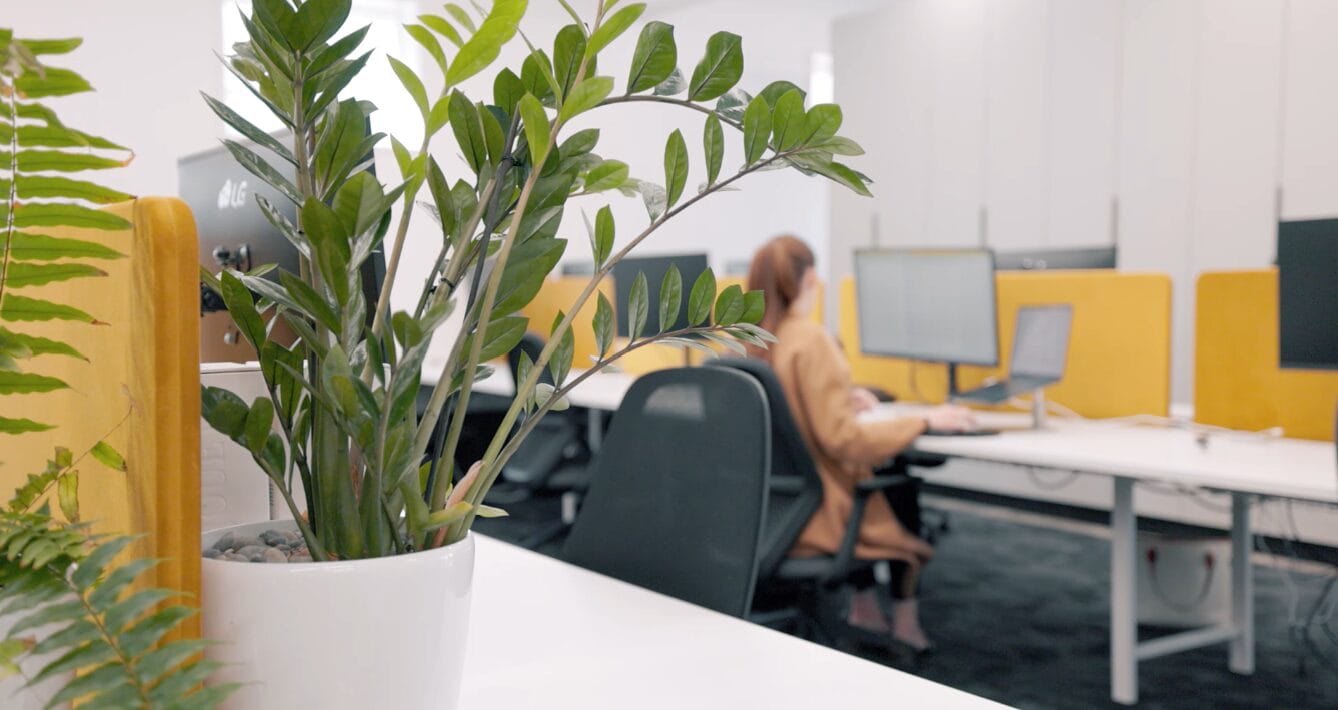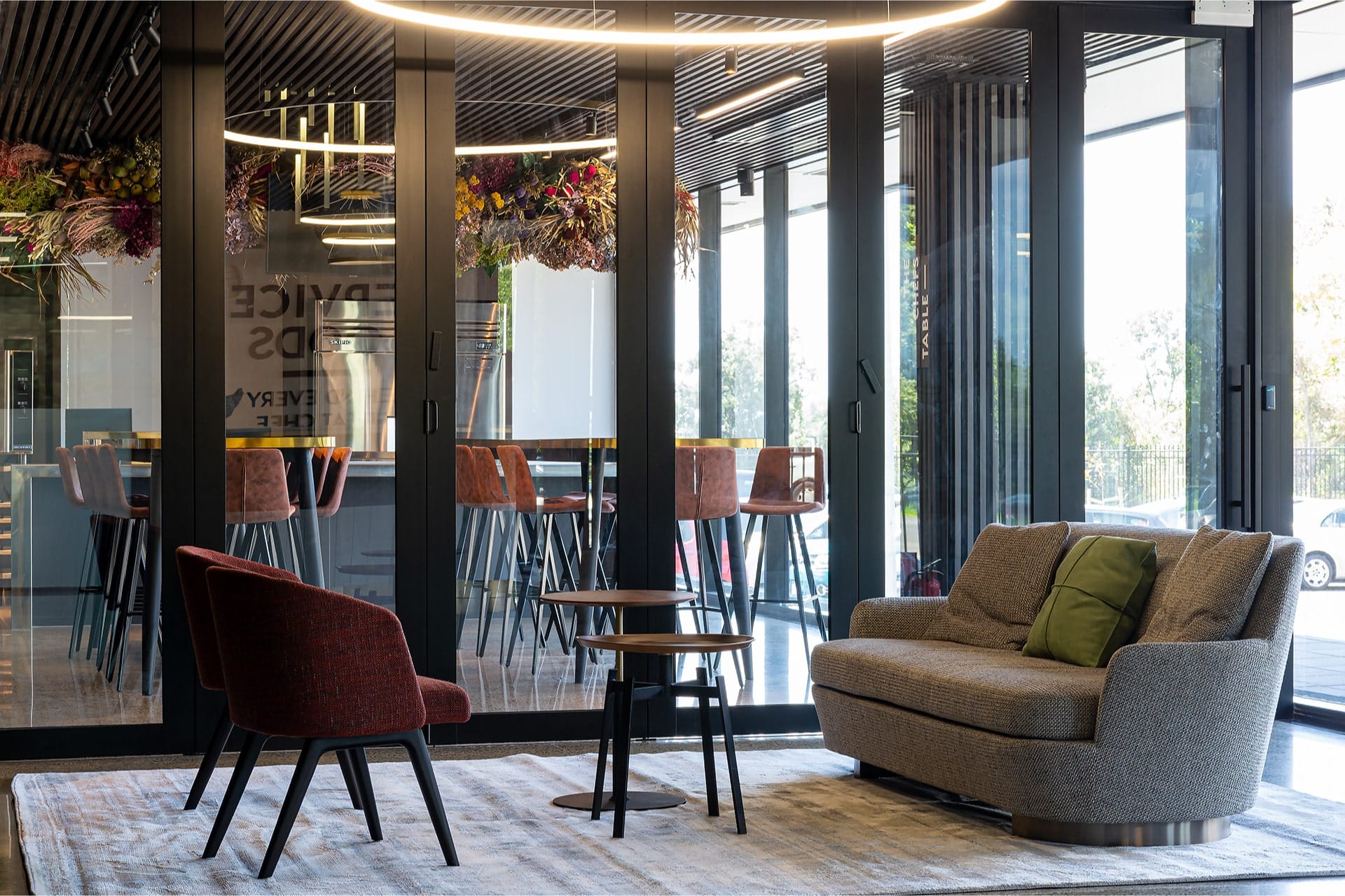

The Feels
Enhancing Employee Well-Being and Productivity through Workplace Design
Workplace well-being and productivity are essential for business success. At Spaceworks, we design workspaces that enhance mental health, balance wellness, and energise employees. In this second edition of our series on key workplace design trends, we explore ‘The Feels’—focusing on how workplace aesthetics and functionality impact employee satisfaction and productivity.
Employee Well-Being and Productivity
Employee well-being is directly linked to productivity. When employees feel valued and supported, they are more likely to be engaged and perform at their best. A well-designed workplace can significantly impact employee well-being by providing a comfortable, inspiring, and healthy environment. Research by the World Green Building Council shows that such spaces can boost productivity by up to 20%. Essential elements include natural light, good air quality, and ergonomic furniture, which help reduce fatigue and increase focus.
However, aesthetics play a key role too. Even with natural light and fresh air, a poorly designed space can negatively affect how employees feel. Creating a positive work environment isn’t just about functionality. Imagine a hotel with great facilities but a tired look—it doesn’t inspire confidence or comfort. Similarly, a workspace that looks neglected can make employees feel undervalued and drained, no matter how functional it might be.
Addressing stress and burnout is also key. A 2022 study by the New Zealand Institute of Wellbeing and Resilience found that 64% of employees felt more stressed and fatigued, citing factors like increased workloads, time pressures, and lack of support. Recognising and managing these issues is essential for a healthy and productive workplace.


Mindfulness and Health: Prioritising Designs that Nurture Mental and Physical Health
Modern workplaces increasingly prioritise mindfulness and health-oriented designs. Mindfulness involves being present and fully engaged, which reduces stress and enhances focus. Designing spaces that support mindfulness can help employees manage their mental health and improve well-being. Gensler’s Workplace Survey found that employees who can control their workspace and access quiet areas report 21% higher job satisfaction and productivity.
Incorporating wellness spaces, such as those for meditation or mindfulness practices, along with areas for returning mothers or prayer rooms, maximises space utilisation and promotes inclusivity. These spaces offer a retreat from the office hustle and bustle, featuring comfortable seating and calming decor.
Physical health is equally important. While not all offices can provide fitness facilities, they can encourage movement through design. This might include sit-to-stand desks, well-distributed spaces, and centrally located communal areas that prompt walking. According to the International WELL Building Institute, prioritising physical health in office design leads to higher employee satisfaction and productivity.
Wellness vs. Well-Being: The Importance of Both
Understanding the difference between wellness and well-being is important for creating a supportive workplace. Wellness typically refers to physical health, including fitness, nutrition, and medical care. Well-being encompasses a broader range of factors, such as emotional, social, and mental health.
A comprehensive workplace design strategy should address both. For physical wellness, this might mean providing access to gyms or green spaces for walks and ensuring healthy food options. From an interior perspective, it includes spaces that encourage movement. For overall well-being, it’s essential to create spaces that promote social interaction, support mental health, and foster a positive work culture. Gallup’s research shows that employees with high well-being are 81% less likely to look for new jobs, underscoring the importance of a holistic approach to employee health and satisfaction.


Magnetic and Energised Workspaces: Creating Environments That Attract Employees
Designing magnetic and energised workspaces is about creating environments that are not only functional but also inspiring and engaging. These spaces make employees excited to come to work and be beneficial to both collaboration and individual productivity.
Vibrant colours, dynamic layouts, and flexible furniture contribute to an energised atmosphere. Incorporating breakout areas, social hubs, and collaborative zones encourages interaction and creativity. According to the Harvard Business Review, workplaces that promote social engagement and collaboration see a 15% increase in productivity.
To create energy and buzz in an office, it’s important to consider the placement of different workspaces. By clustering teams with varying needs, like placing quieter groups next to noisy groups that thrive on activity, we create a dynamic and energetic environment.
Activating spaces from front to back spreads this vibrancy throughout the office. Positioning kitchens or communal areas near the front allows employees and clients to immediately feel a sense of energy and community as they enter. This setup not only provides a warm welcome but also creates a magnetic force that encourages people to return and engage with the space and the business.
Beyond visual appeal, sensory experiences play a crucial role in maintaining engagement. Elements such as soundscapes, varied textures, and engaging visuals can stimulate the senses and keep employees motivated. The goal is to create an environment that is as dynamic and adaptable as the workforce itself.
“Magnetic workplaces are those that energise employees and make them feel part of something bigger.” – Harvard Business Review
By focusing on these aspects, we can create workspaces that not only look good but also feel good, enhancing employee well-being and productivity.
Ready to Enhance Your Workspace?
At Spaceworks, we understand the importance of creating a work environment that not only meets functional needs but also creates well-being and success. Whether you’re looking to implement health-focused designs or find budget-friendly solutions, our team is here to help you transform your workspace into a place where your employees can thrive.
Reach out to our commercial specialist, Jana Stringer to explore how we can tailor our services to meet your specific needs and budget. Jana is ready to guide you through the process and help you create a workspace that inspires productivity and well-being.
- Jana Stringer: Tel: 021 153 3408 Email: jana@spaceworks.co.nz
Let’s work together to design a space that empowers your team and drives success. Get in touch now to start your journey toward a healthier, happier workplace.
Enhance well-being and productivity with Spaceworks’ designs—blending wellness, natural light, ergonomics, and inspiring aesthetics.
Let's discuss your next project




